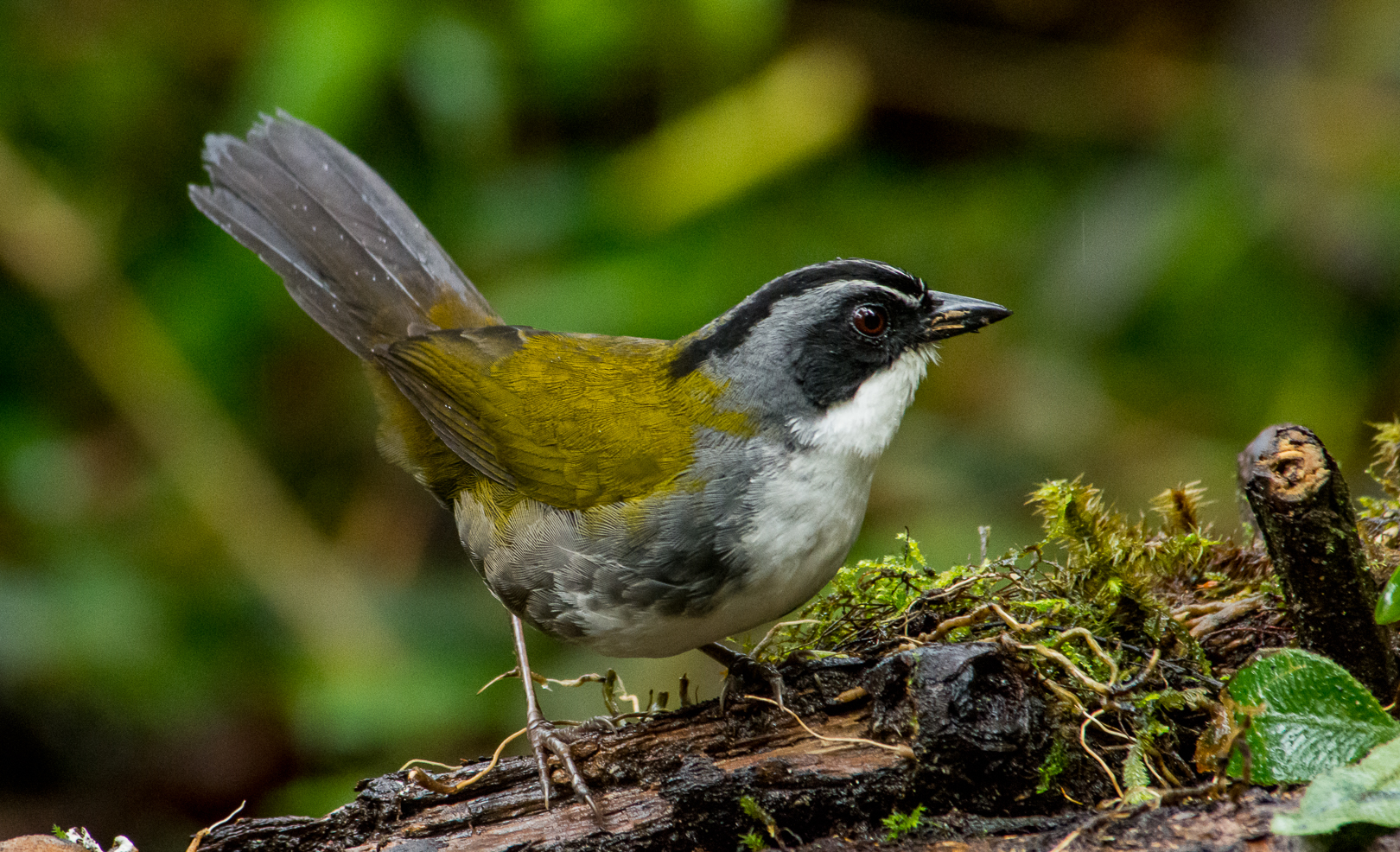Order: PASSERIFORMES
Family: EMBERIZIDAE
This species was until recently considered a subspecies of A. torquatus. Like other species of the genus, it is a bird with semi-terrestrial habits that remains solitary or in pairs. Its name Arremon derives from the Greek root arrhemon = silent and its epithet assimilis derives from Latin and means similar, indicating a similarity with another species.
Description
It measures 19 to 20 cm. Both sexes are similar. It is a robust bird with a large beak and head. The hood and face are black, extending to the cheeks and ear-coverts. It also has a gray midline on the crown and superciliary that extends almost to the base of the bill, near which they become whiter. These superciliars also extend behind the eye and join the gray of the neck, which extends down to the sides of the neck. Its upper parts are olive green and its lower parts are white with the sides of the chest and flanks gray, which turns olive gray in the cloacal area. The irises of their eyes are brownish-brown, the beak black and the legs gray with pink tones. Young have yellowish bill.
Similar species
It can be easily confused with the Phelps’ Brush-Finch (Arremon perijanus) and the Sierra Nevada Brush-Finch (Arremon basilicus), but these two species are found in the Serranía del Perijá and in the Sierra Nevada de Santa Marta respectively, while the Gray-browed Brush-finch are found in the Andes.
Regional Differences
Four subspecies are recognized: A. a. larensis, A. a. assimilis, A. a. nigrifrons and A. a. poliophrys. Only the subspecies assimilis is found in Colombia.
Distribution
This species is found in western Venezuela and across the Andes to southern Peru. In Colombia it is found between 1500 and 3600 m above sea level in the three ranges except on the western slope of the Western Cordillera.
Habitat
It lives in humid mountain forests, on forest edges and in secondary growth forests.
Reproduction
Fledglings have been recorded in July in Colombia in the department of Cauca and in August in Ecuador and Peru. No further information is available
Behavior
Stay alone or in pairs. It forages on the ground where it digs the litter with its beak in search of prey.
Taxonomy
Formerly considered a subspecies of A. torquatus, but according to molecular evidence, plumage and song characteristics, it is a different species.
State of conservation
Its condition is of least concern
Vocalization/ Voice
https://www.xeno-canto.org/575792









